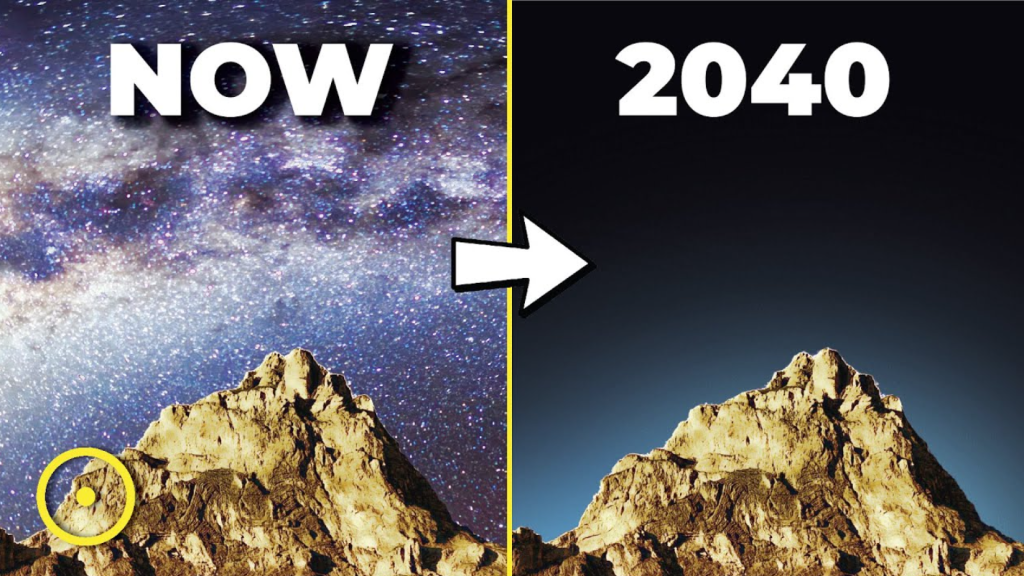The Milky Way, a stunning band of stars stretching across the night sky, has captivated humanity for centuries. Unfortunately, due to light pollution, this breathtaking view is becoming increasingly difficult to see. Light pollution refers to excessive artificial lighting that disrupts our natural night sky, making it harder to observe celestial wonders like the Milky Way.
Light pollution comes in several forms. Sky glow is the bright, eerie light that appears over cities, caused by artificial lights reflecting off particles in the atmosphere. Glare refers to the blinding light that can impair vision, especially while driving. Light trespass occurs when unwanted light spills into spaces that should remain dark, like the annoying streetlights shining through your window. Lastly, clutter is the excessive grouping of lights in urban areas, such as neon signs or billboards, which contribute to light pollution.

While artificial light is important for safety and modern living, excessive or poorly designed lighting can be harmful. It not only prevents us from enjoying the night sky but also has negative impacts on health, wildlife, and the environment. Light pollution is causing a significant loss of our connection to the cosmos and has profound effects on both humans and nature.
For many, the Milky Way has become invisible due to light pollution, with an alarming 80% of North Americans unable to see it from their homes. This loss goes beyond cultural heritage—astronomers and amateur stargazers struggle to observe the universe, and disrupted natural cycles harm wildlife. Many species rely on natural light for navigation, mating, and foraging. Artificial lighting disorients them, which can lead to decreased populations.
The environmental cost of light pollution is also significant. The energy consumed by unnecessary lighting contributes to greenhouse gas emissions and accelerates climate change. As urbanization grows, the areas where we can still see the night sky are shrinking.
The good news is we can take action. Start by using well-designed lighting that directs light where it’s needed and reduces light spillage. Motion sensors and timers help minimize unnecessary light, while warm-colored lights are better for our circadian rhythms and reduce sky glow. On a larger scale, communities and governments can adopt lighting ordinances to minimize light pollution, and visiting dark sky parks supports efforts to protect the natural night sky.
We can also get involved by participating in local stargazing events and spreading awareness. Simple actions like turning off unnecessary lights and closing blinds can significantly reduce light pollution. Together, through small changes, we can bring back the beauty of the Milky Way and restore our connection to the stars.